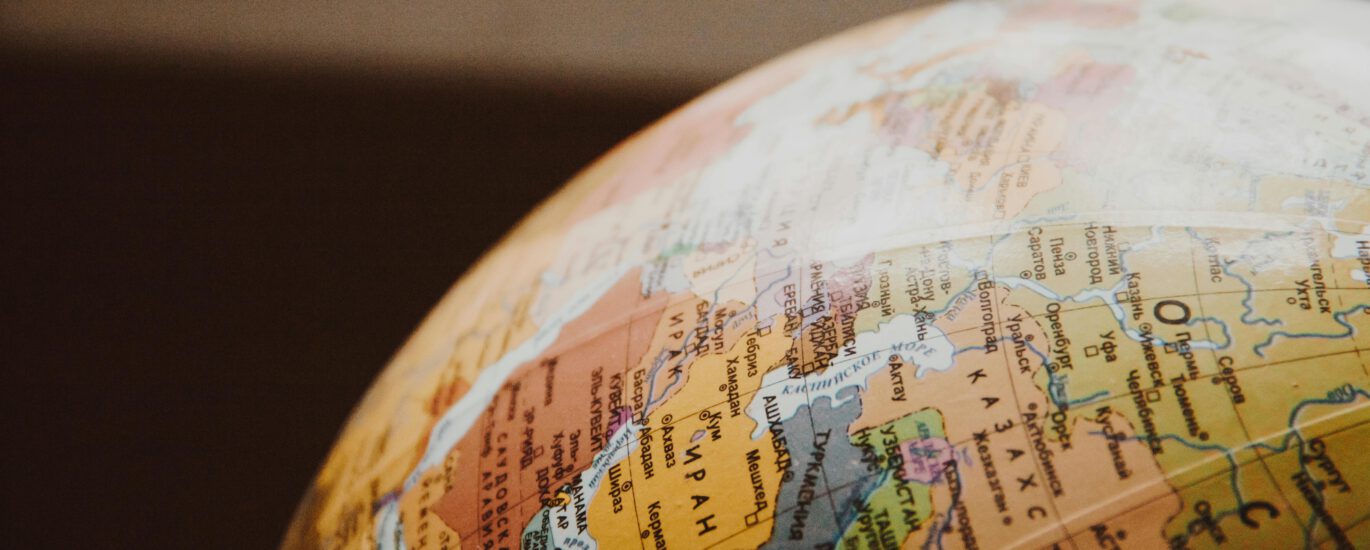Table of Contents
ToggleWhy Language Learning Makes Travel 10x Better
Picture this: You’re standing in a bustling market in Bangkok, trying to buy fresh fruit. The vendor speaks no English, you speak no Thai, and you’re both gesturing wildly while other customers wait impatiently behind you. Sound familiar? This awkward dance happens to millions of travelers every year, but it doesn’t have to happen to you.
Language learning for travel isn’t about becoming fluent before your trip—it’s about building confidence, showing respect for local culture, and unlocking authentic experiences that most tourists never discover. Even knowing basic phrases can transform your journey from a series of tourist attractions into genuine cultural immersion.
The best travel language learning strategies focus on practical, immediately useful phrases rather than complex grammar rules. You don’t need to conjugate verbs perfectly to ask for directions, order food, or make friends with locals. You just need the right tools, techniques, and mindset.
Let’s explore how to master essential travel phrases, choose the right apps, and prepare linguistically for any destination—whether you have three months or three days before departure.
The Language Learning for travel Mindset: Quality Over Quantity
Focus on High-Impact Phrases
Traditional Language Learning: Start with alphabet, basic grammar, and common vocabulary like colors and numbers.
Travel Language Learning: Jump straight to phrases you’ll use multiple times daily: “Where is…?”, “How much does this cost?”, “Can you help me?”, “Thank you”, and “Excuse me.”
Embrace Imperfection
The Tourist Trap: Waiting until you can speak “properly” before attempting conversations.
The Traveler’s Advantage: Understanding that locals appreciate any effort to speak their language, even if your pronunciation is terrible and your grammar is wrong.
Cultural Context Matters
Beyond Words: Learning not just what to say, but when and how to say it. Understanding cultural norms around greetings, bargaining, tipping, and social interactions.
Essential Travel Phrases for Any Language
Survival Basics (Learn These First)
Greetings and Politeness:
-
Hello / Good morning / Good evening
-
Please / Thank you / You’re welcome
-
Excuse me / I’m sorry
-
Yes / No
-
Goodbye
Navigation and Transportation:
-
Where is…? (bathroom, train station, hotel, restaurant)
-
How do I get to…?
-
How much does this cost?
-
Can you help me?
-
I don’t understand
-
Do you speak English?
Emergency Phrases:
-
Help!
-
Call the police / doctor
-
I need a hospital
-
I’m lost
-
Where is the nearest…?
Food and Dining Essentials
Restaurant Basics:
-
Table for [number] people, please
-
What do you recommend?
-
I’m vegetarian / I have allergies
-
The check, please
-
This is delicious
-
Can I have…?
Dietary Restrictions:
-
I don’t eat meat / fish / dairy
-
I’m allergic to…
-
Is this spicy?
-
No ice, please
-
Bottled water, please
Shopping and Bargaining
Market Interactions:
-
How much is this?
-
That’s too expensive
-
Can you give me a better price?
-
I’ll take it
-
Do you accept credit cards?
-
Can I try this on?
The 30-Day Travel Language Learning Plan
Days 1-7: Foundation Building
Daily Time Commitment: 15-20 minutes
Focus Areas:
-
Master basic greetings and politeness phrases
-
Learn numbers 1-20 and basic question words (what, where, when, how)
-
Practice pronunciation using language apps with speech recognition
-
Start with one travel-focused app (recommendations below)
Daily Routine:
-
10 minutes app-based learning
-
5 minutes pronunciation practice
-
5 minutes listening to target language music or podcasts
Days 8-14: Practical Expansion
Daily Time Commitment: 20-25 minutes
Focus Areas:
-
Transportation and navigation phrases
-
Food and restaurant vocabulary
-
Emergency and safety phrases
-
Cultural greeting customs research
Daily Routine:
-
15 minutes app lessons focusing on travel scenarios
-
5 minutes watching travel vlogs in target language
-
5 minutes practicing conversations with language exchange partners
Days 15-21: Scenario Practice
Daily Time Commitment: 25-30 minutes
Focus Areas:
-
Role-playing common travel situations
-
Shopping and bargaining phrases
-
Hotel and accommodation vocabulary
-
Local customs and cultural etiquette
Daily Routine:
-
10 minutes scenario-based app lessons
-
10 minutes conversation practice (apps or language exchange)
-
10 minutes consuming travel content in target language
Days 22-30: Confidence Building
Daily Time Commitment: 30-35 minutes
Focus Areas:
-
Combining phrases into longer conversations
-
Handling unexpected situations
-
Cultural nuances and local expressions
-
Final preparation and review
Daily Routine:
-
15 minutes advanced conversation practice
-
10 minutes cultural content (movies, news, blogs)
-
10 minutes review and reinforcement of essential phrases
Best Travel Language Learning Apps for 2025
1. abblino – Real Conversation Practice
Best for: Travelers who want to speak confidently from day one
Why It’s Perfect for Travel: abblino’s conversational approach means you’re practicing real-world scenarios immediately. Instead of memorizing isolated words, you’re learning how to actually communicate in travel situations.
Travel-Specific Features:
-
Daily speaking prompts based on travel scenarios
-
Voice practice with realistic conversations
-
Community features to connect with locals
-
Progress tracking to build confidence before departure
2. Google Translate – Your Pocket Interpreter
Best for: Emergency communication and real-time translation
Travel Superpowers:
-
Camera translation for menus and signs
-
Offline translation for 59 languages
-
Conversation mode for real-time dialogue
-
Handwriting recognition for complex scripts
3. Duolingo – Gamified Basics
Best for: Building foundational vocabulary before travel
Travel Benefits:
-
Quick daily lessons that fit busy travel prep schedules
-
Offline lessons for learning during flights
-
Travel-themed lesson packs
-
Streak motivation to maintain consistency
4. Babbel – Practical Conversations
Best for: Learning phrases you’ll actually use
Travel Focus:
-
Real-world dialogue practice
-
Cultural context explanations
-
Travel-specific lesson categories
-
Speech recognition for pronunciation
5. HelloTalk – Connect with Locals
Best for: Pre-trip cultural exchange and local insights
Travel Advantages:
-
Chat with natives from your destination
-
Get local recommendations and tips
-
Practice with people who understand your travel goals
-
Learn current slang and expressions
6. Pimsleur – Audio Learning for Busy Travelers
Best for: Learning during commutes and travel prep
Travel Benefits:
-
Hands-free learning perfect for multitasking
-
Focus on speaking and listening skills
-
Graduated difficulty that builds confidence
-
Downloadable lessons for offline use
Destination-Specific Language Strategies
Europe: Romance Languages (Spanish, French, Italian, Portuguese)
Advantages: Similar grammar structures and vocabulary roots Strategy: Learn one well, then pick up basics in others quickly Cultural Tip: Europeans often speak multiple languages—don’t be afraid to ask “Do you speak English?” in their language first
Asia: Tonal Languages (Mandarin, Thai, Vietnamese)
Challenges: Tone changes meaning completely Strategy: Focus heavily on pronunciation and listening practice Cultural Tip: Showing effort to speak the local language is deeply appreciated, even if imperfect
Middle East: Arabic Variations
Complexity: Different dialects across regions Strategy: Learn Modern Standard Arabic basics, then regional phrases Cultural Tip: Understanding cultural context is as important as language
Latin America: Spanish Variations
Opportunity: Spanish opens doors across multiple countries Strategy: Learn neutral Spanish, then pick up local expressions Cultural Tip: Each country has unique slang—embrace the differences
Technology Tools for Travel Language Learning
Translation Apps Beyond Google Translate
Microsoft Translator:
-
Real-time conversation translation
-
Group conversation features
-
Offline support for key languages
iTranslate:
-
Voice-to-voice translation
-
Camera translation
-
Phrasebook with common expressions
Waygo:
-
Specializes in Asian languages (Chinese, Japanese, Korean)
-
Camera translation without internet
-
Perfect for reading menus and signs
Language Learning Hardware
Pocketalk Translator:
-
Dedicated translation device
-
82 languages supported
-
Built-in global SIM card
Travis Touch Plus:
-
105 languages
-
Offline translation capabilities
-
Cultural etiquette tips
Cultural Intelligence: Beyond Language
Understanding Context
High-Context Cultures (Japan, Arab countries):
-
What you don’t say is as important as what you do say
-
Non-verbal communication carries significant meaning
-
Silence and pauses are normal parts of conversation
Low-Context Cultures (Germany, Scandinavia):
-
Direct communication is preferred
-
Explicit verbal communication is valued
-
Small talk may be minimal
Social Norms and Language Use
Formal vs. Informal Address:
-
Many languages have different forms for “you” (formal/informal)
-
Using the wrong form can be offensive or overly familiar
-
When in doubt, err on the side of formality
Gift-Giving and Gratitude:
-
Learn appropriate ways to express thanks
-
Understand when gifts are expected or inappropriate
-
Know how to politely decline offers
Common Travel Language Mistakes to Avoid
1. The False Friend Trap
The Problem: Words that look similar to English but mean something different Example: “Embarazada” in Spanish means pregnant, not embarrassed Solution: Learn common false friends for your target language
2. Literal Translation Addiction
The Problem: Translating English phrases word-for-word Example: “I am hot” literally translated can mean “I am sexually aroused” in some languages Solution: Learn phrases as complete units, not word combinations
3. Ignoring Cultural Context
The Problem: Using language correctly but inappropriately for the situation Example: Using informal language with elders or authority figures Solution: Research cultural norms alongside language learning
4. Over-Relying on Translation Apps
The Problem: Never developing actual language skills Example: Holding up your phone for every interaction Solution: Use apps as backup, not primary communication method
Building Confidence for Travel Conversations
Practice Scenarios at Home
Restaurant Role-Play:
-
Practice ordering food with family or friends
-
Simulate dealing with dietary restrictions
-
Practice asking for recommendations
Navigation Practice:
-
Ask for directions around your own city in the target language
-
Practice describing your hotel or landmarks
-
Learn to understand basic directional responses
Shopping Simulations:
-
Practice bargaining at local markets
-
Learn to ask about sizes, colors, and prices
-
Simulate payment and receipt interactions
Mental Preparation Techniques
Visualization:
-
Imagine successful conversations in your target language
-
Visualize handling challenging situations calmly
-
Picture locals responding positively to your efforts
Confidence Building:
-
Remember that locals appreciate any effort to speak their language
-
Focus on communication, not perfection
-
Prepare backup phrases for when you don’t understand
Emergency Language Preparedness
Critical Emergency Phrases
Medical Emergencies:
-
I need a doctor / hospital
-
I’m having chest pain / difficulty breathing
-
I’m diabetic / have heart problems
-
Please call an ambulance
-
Where is the nearest pharmacy?
Safety Situations:
-
Help! / Fire! / Police!
-
I’ve been robbed
-
I’m lost
-
Can you call the police?
-
I need to contact my embassy
Communication Breakdowns:
-
I don’t speak [language] well
-
Can you speak more slowly?
-
Can you write that down?
-
Do you speak English?
-
I need a translator
Emergency Contact Preparation
Before You Travel:
-
Save emergency phrases in your phone’s notes app
-
Download offline translation apps
-
Research local emergency numbers
-
Know your embassy contact information
-
Prepare a card with your hotel address in local script
Measuring Your Travel Language Success
Realistic Goals vs. Unrealistic Expectations
Realistic 30-Day Goals:
-
Handle basic greetings and politeness
-
Order food and drinks confidently
-
Ask for directions and understand basic responses
-
Express gratitude and appreciation
-
Handle simple shopping transactions
Unrealistic 30-Day Expectations:
-
Having deep philosophical conversations
-
Understanding rapid native speech perfectly
-
Debating politics or complex topics
-
Reading newspapers fluently
-
Understanding all cultural references
Success Metrics That Matter
Communication Success:
-
Did you successfully order what you wanted?
-
Could you find your way using local directions?
-
Did locals respond positively to your language efforts?
-
Were you able to express basic needs and wants?
Cultural Connection:
-
Did speaking the language lead to more authentic interactions?
-
Were locals more helpful when you spoke their language?
-
Did you feel more confident navigating the culture?
-
Did language learning enhance your travel experience?
Advanced Travel Language Strategies
Regional Dialect Preparation
Research Local Variations:
-
Mexican Spanish vs. Argentinian Spanish
-
Parisian French vs. Quebec French
-
British English vs. Australian English
Adapt Your Learning:
-
Focus on the specific region you’re visiting
-
Learn key regional expressions and slang
-
Understand pronunciation differences
Long-Term Travel Language Planning
Multi-Country Trips:
-
Prioritize languages by time spent in each country
-
Focus on lingua francas (English, Spanish, French, Arabic)
-
Learn basic greetings in every language, deeper skills in primary destinations
Extended Travel:
-
Plan language learning phases for different trip segments
-
Use travel time for language study
-
Immerse yourself progressively as you improve
Technology Integration for Modern Travel Language Learning
Smartphone Setup for Language Learning
Essential Apps Configuration:
-
Download offline language packs before departure
-
Set up quick access to translation apps
-
Configure keyboard languages for typing
-
Save important phrases in easily accessible notes
Backup Strategies:
-
Screenshot important phrases for offline access
-
Save audio recordings of pronunciation guides
-
Prepare physical phrase cards as technology backup
-
Research internet connectivity at your destination
Wearable Technology for Language Learning
Smartwatch Integration:
-
Quick access to translation apps
-
Voice recording for pronunciation practice
-
Reminder notifications for daily language practice
-
Offline phrase storage
The Psychology of Travel Language Learning
Overcoming Language Anxiety
Common Fears:
-
Fear of making mistakes in public
-
Worry about offending locals with poor pronunciation
-
Anxiety about not being understood
-
Embarrassment about accent or grammar errors
Confidence-Building Strategies:
-
Start with low-stakes interactions (ordering coffee, saying hello)
-
Remember that effort is more important than perfection
-
Focus on successful communication, not flawless grammar
-
Celebrate small victories and progress
Motivation Maintenance
Pre-Travel Motivation:
-
Connect language learning to specific travel goals
-
Visualize the experiences you’ll unlock through language
-
Set daily practice streaks leading up to departure
-
Join online communities of travelers learning the same language
During-Travel Practice:
-
Use every interaction as a learning opportunity
-
Keep a travel language journal
-
Celebrate successful conversations
-
Don’t be discouraged by misunderstandings
Final Thoughts: Language as Your Travel Superpower
Learning a language for travel isn’t about achieving fluency—it’s about building bridges. Every “hello” in the local language, every “thank you” pronounced with effort, every attempt to connect across linguistic barriers opens doors that remain closed to monolingual travelers.
The best travel language learning approach combines practical phrase mastery with cultural understanding, supported by modern technology but not dependent on it. Whether you have months to prepare or just a few weeks, focusing on high-impact phrases and real-world scenarios will transform your travel experience.
Remember: locals don’t expect perfection from travelers. They expect respect, effort, and genuine interest in their culture. Your willingness to stumble through their language, make mistakes, and keep trying anyway often matters more than flawless pronunciation or perfect grammar.
Your next adventure awaits, and now you have the tools to unlock its full potential. The world becomes a smaller, friendlier place when you can connect with people in their own language—even if it’s just to say “hello” and “thank you.”
Ready to turn your next trip into a linguistic adventure? Start with one phrase, one app, and one conversation. The journey of a thousand miles begins with a single “hello.”





